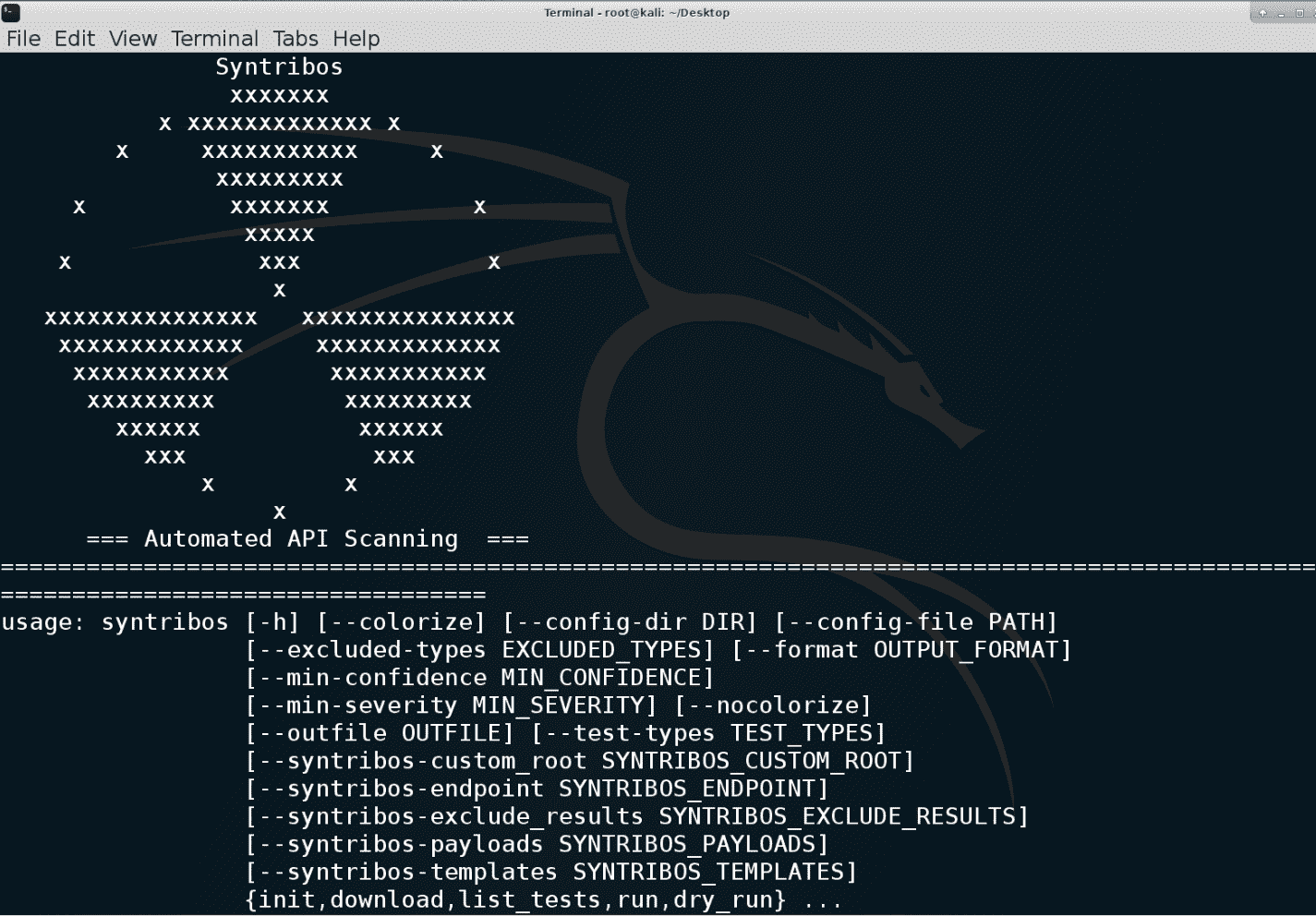syntribos: An Automated API Security Testing Tool

Syntribos, An Automated API Security Testing Tool
Syntribos is an open source automated API security testing tool that is maintained by members of the OpenStack Security Project.
Given a simple configuration file and an example HTTP request, syntribos can replace any API URL, URL parameter, HTTP header and request body field with a given set of strings. Syntribos iterates through each position in the request automatically. Syntribos aims to automatically detect common security defects such as SQL injection, LDAP injection, buffer overflow, etc. In addition, syntribos can be used to help identify new security defects by automated fuzzing.
Syntribos has the capability to test any API but is designed with OpenStack applications in mind.
List of Tests
With syntribos, you can initiate automated testing of any API with minimal configuration effort. Syntribos is ideal for testing the OpenStack API as it will help you in automatically downloading a set of templates of some of the bigger OpenStack projects like Nova, neutron, keystone, etc.
A short list of tests that can be run using syntribos is given below:
- Buffer Overflow
- Command Injection
- CORS Wildcard
- Integer Overflow
- LDAP Injection
- SQL Injection
- String Validation
- XML External Entity
- Cross Site Scripting (XSS)
- Regex Denial of Service (ReDoS)
- JSON Parser Depth Limit
- User Defined
Buffer Overflow
Buffer overflow attacks, in the context of a web application, force an application to handle more data than it can hold in a buffer. In syntribos, a buffer overflow test is attempted by injecting a large string into the body of an HTTP request.
Command Injection
Command injection attacks are done by injecting arbitrary commands in an attempt to execute these commands on a remote system. In syntribos, this is achieved by injecting a set of strings that have been proven as successful executors of injection attacks.
CORS Wildcard
CORS wildcard tests are used to verify if a web server allows cross-domain resource sharing from any external URL (wild carding of Access-Control-Allow-Origin header), rather than a white list of URLs.
Integer Overflow
Integer overflow tests in syntribos attempt to inject numeric values that the remote application may fail to represent within its storage. For example, injecting a 64 bit number into a 32 bit integer type.
DAP Injection
Syntribos attempts LDAP injection attacks by injecting LDAP statements into HTTP requests; if an application fails to properly sanitize the request content, it may be possible to execute arbitrary commands.
SQL Injection
SQL injection attacks are one of the most common web application attacks. If the user input is not properly sanitized, it is fairly easy to execute SQL queries that may result in an attacker reading sensitive information or gaining control of the SQL server. In syntribos, an application is tested for SQL injection vulnerabilities by injecting SQL strings into the HTTP request.
String Validation
Some string patterns are not sanitized effectively by the input validator and may cause the application to crash. String validation attacks in syntribos try to exploit this by inputting characters that may cause string validation vulnerabilities. For example, special unicode characters, emojis, etc.
XML External Entity
XML external entity attacks target the web application’s XML parser. If an XML parser allows processing of external entities referenced in an XML document then an attacker might be able to cause a denial of service, or leakage of information, etc. Syntribos tries to inject a few malicious strings into an XML body while sending requests to an application in an attempt to obtain an appropriate response.
Cross Site Scripting (XSS)
XSS attacks inject malicious JavaScript into a web application. Syntribos tries to find potential XSS issues by injecting string containing “script” and other HTML tags into request fields.
Regex Denial of Service (ReDoS)
ReDoS attacks attempt to produce a denial of service by providing a regular expression that takes a very long time to evaluate. This can cause the regex engine to backtrack indefinitely, which can slow down some parsers or even cause a processing halt. The attack exploits the fact that most regular expression implementations have an exponential time worst case complexity.
JSON Parser Depth Limit
There is a possibility that the JSON parser will reach a depth limit and crash, resulting in a successful overflow of the JSON parsers depth limit, leading to a DoS vulnerability. Syntribos tries to check for this and raises an issue if the parser crashes.
User-defined Test
This test gives users the ability to fuzz using user-defined fuzz data and provides an option to look for failure strings provided by the user. The fuzz data needs to be provided using the config option :option:`[user_defined]`.
Example:
Other than these built-in tests, you can extend syntribos by writing your own custom tests. To do this, download the source code and look at the tests in the syntribos/tests directory. The CORS test may be an easy one to emulate. In the same way, you can also add different extensions to the tests. To see how extensions can be written please see the syntribos/extensionsdirectory.
Supported Operating Systems
Syntribos has been developed primarily in Linux and Mac environments and would work on most Unix and Linux based Operating Systems. At this point, we are not supporting Windows, but this may change in the future.
Installation
Tutorial
Copyright (C) 2016
Source: https://github.com/openstack/





